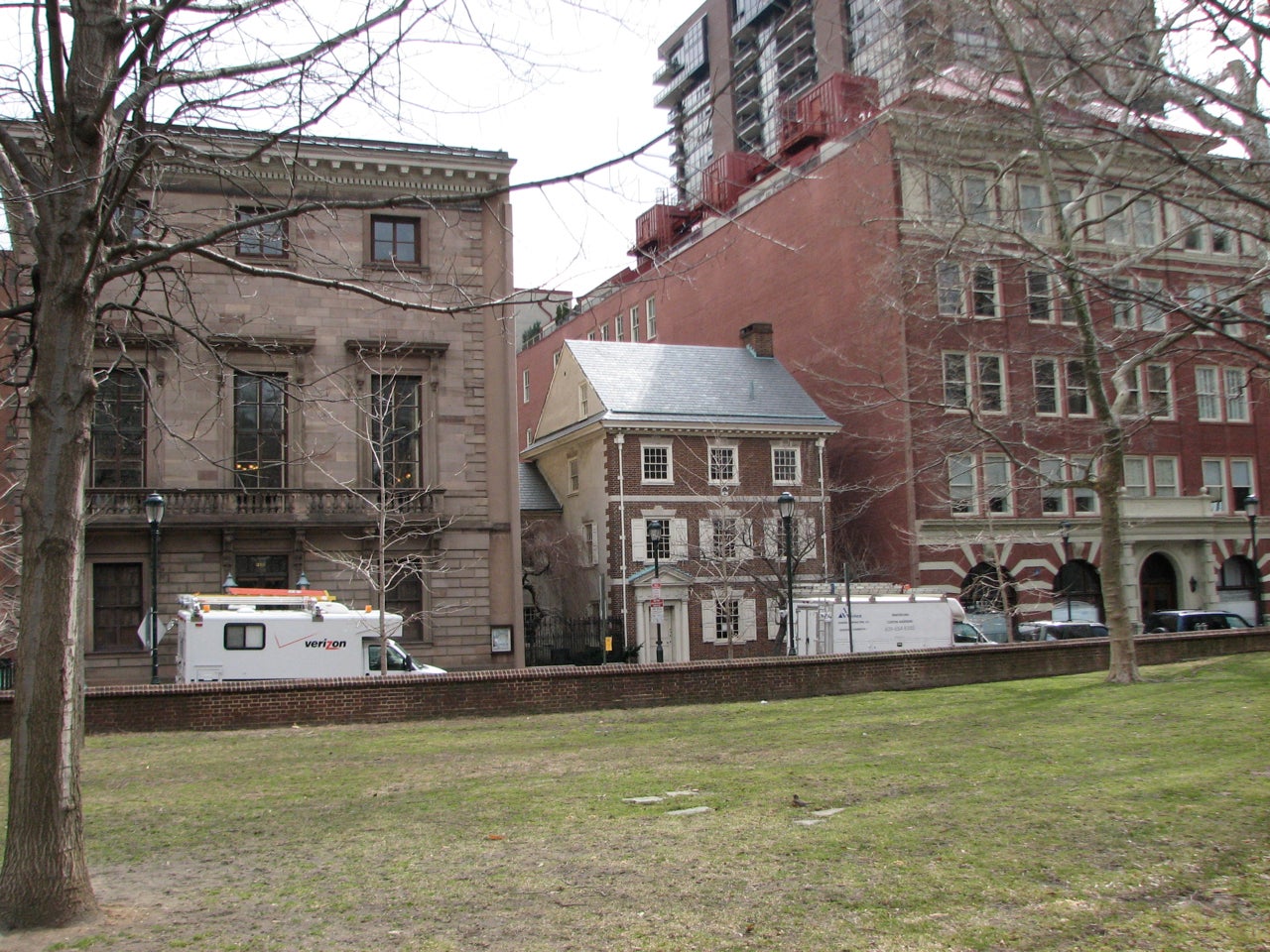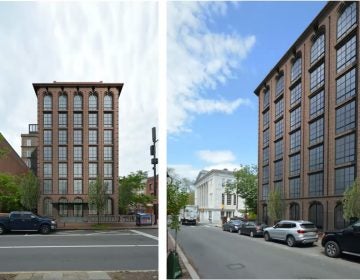Update: Commonwealth Court upholds Dilworth House appeal
By Alan Jaffe
For PlanPhilly
The owners who wish to build a condominium tower behind and above the Dilworth House on Washington Square this week lost a significant court battle – one of two being waged with neighbors and preservationists opposed to the project.
The house at 223-225 South 6th St. was built for Mayor Richardson Dilworth and his wife Anne in 1957. The Colonial Revival structure was designed by G. Edwin Brumbaugh and is part of the Society Hill Historic Preservation District. Dilworth chose to build his home there to help revive the deteriorating, historic neighborhood.
The current owners of the property are John and Mary Turchi, who received the approval of the Philadelphia Historical Commission in November 2007 to remove a section of the rear wall, the two-story stair hall and the rear L-shaped portions of the house to clear construction for a 219-foot tower designed by one of the city’s most accomplished architectural firms, Venturi, Scott Brown & Associates.
The Board of Licenses & Inspections Review voted Jan. 12, for the second time, to side with Concerned Citizens Opposing the Dilworth Development Project and the civic association and to disallow the demolition permit granted for the project.
On a parallel legal track, the Commonwealth Court on April 9 upheld the appeal of the zoning issues filed by Concerned Citizens, the civic association, and Donald and Barbara Haviland, who live in a building next to the Dilworth House.
The opponents argued that the proposed tower required a loading dock to serve the 17-story, 90,000-square-foot project, and that the developer’s contention that it would be a hardship to create a loading space accessible by trucks in the rear of the property was not accurate. The hardship was “self-inflicted” because of the size of the proposed building, they said.
The court agreed. “Where no hardship is shown, or where the asserted hardship amounts to a landowner’s desire to increase profitability or maximize development potential, the unnecessary hardship criterion required to obtain a variance is not satisfied,” Judge Robert Simpson wrote for the court.
The neighbors also argued that the ZBA had refused to allow them to present evidence at the zoning hearings back in 2009. They said the ZBA prevented them from questioning two L&I officials involved in reviewing the project, and that when they tried to file an appeal petition, the ZBA refused to accept the paperwork because it was submitted “untimely.”
Again, the court agreed with the neighbors, saying they were not given the opportunity to fully present their case before the ZBA.
“The Commonwealth Court concluded that the Zoning Board, in limiting our ability to offer certain evidence, deprived us of our rights of due process,” Boni said.
The court remanded that issue back to the Philadelphia Court of Common Pleas “to analyze these claims” and possibly send them back to the ZBA.
The project opponents also contended that L&I had erred in allowing the Turchis and the Athenaeum, the historic architectural library next to the Dilworth House, to claim a “unity of use” between the two properties, which allowed the owners to avoid several Zoning Code requirements.
The court found that the ZBA should have allowed the neighbors to challenge the application of a “unity of use” agreement in this case, and remanded that issue back to the trial court.
“One thing we’re very pleased about is the court’s ruling on the issues of ‘unity of use.’ It is almost a custom at L&I to treat multiple properties as one zoning envelope,” Boni said. “We argued that it was inappropriate in this case, and the court seems to have agreed with us.”
The larger point, he said, is that the city’s “Zoning Code has now been revised. We spent a lot of time coming up with the new code. I think it’s unwise for the city to have customs that are not contained in the Zoning Code. That’s the old way of doing things. Everything should be written in black and white for everyone to see. I hope the city will now look with disfavor on customs and traditions that are not in the code.”
Boni was uncertain where the case may go next. “The developer could appeal this to the state Supreme Court, or redesign the project, or abandon ship.”
The Dilworth House “can and should be used as a single-family home, and we won’t rest until that occurs,” he also said. “The Society Hill Civic Association is strongly supportive of new development, so long as it occurs in appropriate locations.”
“The Dilworth House can and should be used as a single family home and we won’t rest until that occurs. he Society Hill Civic Association is strongly supportive of new development so long as it occurs in appropriate locations,” Boni said.
Contact the writer at ajaffe@planphilly.com.
WHYY is your source for fact-based, in-depth journalism and information. As a nonprofit organization, we rely on financial support from readers like you. Please give today.






